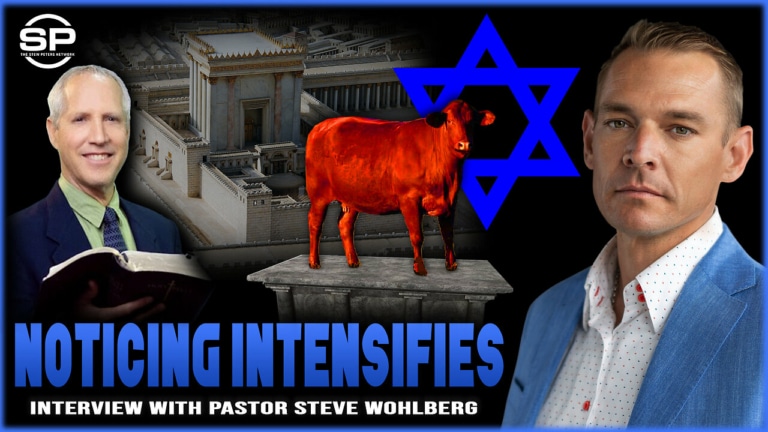In Volume 4 of his massive Horae Apocalpticae (literally – Hours with the Apocalypse), in an incredibly valuable section called, History of Apocalyptic Interpretation, E.B. Elliott traces the teachings of every major Christian author who wrote significant commentaries on the book of Revelation from the time of John down to the 1800’s – including Victorinus (1st century), Justin Martyr, Irenaeus, Tertullian, Hippolytus (3rd century), Origen, Methodius, Lactantius, Eusebius (4th century), Athanasius, Hilary, Jerome, Chrysostom, Augustine, Tichonius, Bede (8th century), Ambrose, Haymo, Andreas, Anselm (12th century), Joachim Abbas (12th century), Jean Pierre d’Olive, Martin Luther (16th century), Bullinger, Bale, John Foxe, Brightman (17th century), Pareus, Franisco Ribera, Alcasar, Mede, Jurieu, Dr. Cressener, Bossuet, Vitringa (18th century), Daubuz, Sir Isaac Newton (18th century), Lacunza, and Gulloway (19th century). His overview is truly enlightening and worth the price of the 4-volume set.
Elliott defines Historicism as “that view which regards the prophecy [of Revelation] as a prefiguration of the great events that were to happen in the church, and the world connected with it, from St. John’s time to the consummation; including specially the establishment of Popedom, and reign of Papal Rome, as in some way or other the fulfillment of the types of the Apocalyptic Beast and Babylon” (Horae, Vol. 4, p. 564).
Although there were differences of opinion, the following teachings reflect the continuous historicist approach to interpreting God’s Word:
The 7 Churches (Revelation 2,3) – These reflect successive phases of Christianity from the time of John to the consummation.
The 7 Seals (Revelation 5,6) – These also reflect successive phases of Christianity from the time of John to the return of Jesus Christ. For instance Ambrose, Bishop of Havilburg, wrote in approximately 1145 AD, “The white horse typifies the earliest state of the church, white with the luster of miraculous gifts: the rider Christ, with the bow of evangelical doctrine … The red horse is the next state of the church, red with the blood of martyrdom; from Stephen the proto-martyr to the martyrs under Diocletian … The black horse depicts the Church’s third state, blackened after Constantine’s time with heresies … The pale horse signified the Church’s fourth state, colored with the hue of hypocrisy … This state he makes to have commenced from the beginning of the fifth century …” (Horae, Vol. 3, p. 383). This historicist view of the Seals was “the usual” view of most expositors down through the ages (p. 348).
The 7 Trumpets (Revelation 8, 9) – Daubuz, Mede, and Jurieu, along with almost all Reformation Protestants, saw Trumpets 1-6 as depicting “the desolations and fall, first of the Western empire, then the Eastern” (p. 514). Mr. Gulloway’s (1802) “Brief Commentaries…”, in harmony with other Protestants, viewed “the first four [trumpets] depicting that of the Gothic invasions of the West; the 5th and 6th, or two first woe- trumpets, those of the Saracens and Turks in the East” (p. 544). Mr. Bicheno (1793) also saw the “5th and 6th trumpets … like most other Protestant interpreters, of the Saracens and Turks” (p. 546). (For more information about applying the 5th and 6th trumpets to Islam, read the article, The Army of Locusts, on this web site under Islam in Prophecy).
The Two Witnesses (Revelation 11) – Tichonius (4th century) saw “the sackcloth-robed witnesses as either the two Testaments, or the light-giving Church fed by the oil of those two Testaments” (p. 332). Most Protestants saw the two witnesses as faithful Christians throughout the Dark Ages who opposed the Papal Supremacy, while Mr. Gulloway also interprets them “to symbolize the Old and New Testaments” (ibid. p. 544), as did martyrologist John Foxe (p. 470). Sir Isaac Newton wrote of “the bitter times of the [Papal] Beast’s 1260 years, and the Witnesses’ prophesying in sackcloth” (ibid. p. 520). Vitringa (18th century) discerned “the Witnesses prophesying in sackcloth … ” with a bold “antipapal testimony from Peter Valdes to the Reformation” (p. 509).
The Child-bearing Woman (Revelation 12) – In harmony with many others, John Foxe interpreted “the Woman travailing” as “God’s true Church” (p. 464). After the birth and ascension of Christ to the throne of God (Revelation 12:2-5), the Dragon turned its wrath upon the Church of Jesus Christ, which having fled into “the wilderness,” was nourished during the 1260 days [years] of Papal apostasy and persecution.
The Leopard-like Beast (Revelation 13) – Dr. Cressener’s (1690) “Demonstration of the First Principles of the Protestant Application of the Apocalypse … well answers to its title. Its one grand subject is the Apocalyptic Beast of Apoc. XIII and XVII … And in a series of connected propositions he incontrovertibly establishes, against Alcasar and Bellarmine, that the Apocalyptic Babylon is not Rome Pagan … nor Rome paganized at the end of the world, as Ribera and Malvenda would have it to be; but Rome Papal, as existing from the 6th century” (p. 500). “Vitringa” also, in harmony with the vast majority of Protestant scholars, “interprets it of Papal Rome” (p. 511). “In Apoc. XII and XIII. Sir Isaac Newton generally agrees with Mede … Apoc. XIII [is] the Latin Papal Empire…” (p. 519).
Thus it is clear from the facts of history that Protestant scholars and others have for centuries understood the great prophecies of the book of Revelation not as applying solely to the first century (the Preterist view), nor to some imaginary future time-period after a supposed secret Rapture (the Futurist view), but as being successively fulfilled throughout the history of Christianity.
Jesus Christ said in Revelation 13:9, “If any man has an ear, let him hear.”






